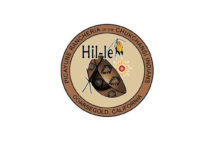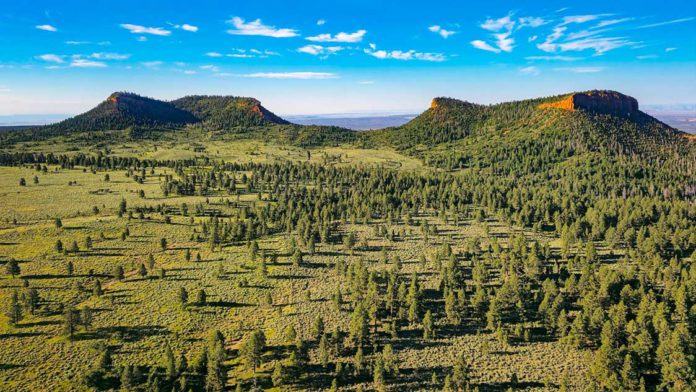WASHINGTON, D.C. – For the first time in U.S. history, a coalition of five tribal nations have collaborated with federal agencies to craft a management plan for their ancestral homelands and sacred sites on public lands.
The five tribes of the Bears Ears Commission (the Commission) – Ute Indian Tribe, Ute Mountain Ute Tribe, Zuni Tribe, Hopi Tribe and the Navajo Nation – along with federal partners at the Bureau of Land Management (BLM) and the U.S. Forest Service (USFS), announced the release of the draft Resource Management Plan (RMP) for the Bears Ears National Monument.
The Commission was established during the Obama administration, following the President’s proclamation that established Bears Ears as a national monument. The draft RMP is the culmination of nearly two years of collaboration between the tribes’ traditional knowledge holders, historic preservation officers, elected tribal leaders, and federal land planning staff and leadership at the BLM and the USFS.
“The petroglyphs, artifacts, landmarks, and landforms in the Bears Ears region help Hopi people trace our migration histories,” said Craig Andrews, Vice Chairman of the Hopi Tribe and Co-Chair of the Bears Ears Commission. “We know that our ancestors decided to leave places that had been occupied by our people for centuries. Some non-Native archeologists may use the term abandoned when studying dwellings, but that is not a word that Hopi use because we know our ancestors are still present. Though these areas were never again settled by Hopi/Pueblo physically, they remain inhabited by our ancestors spiritually. Recognition of these places is preserved in our songs and ceremonies, and these places continue to be visited for ceremonial harvesting and collecting. Bears Ears is integral to our ceremonies, traditions, and our identity as Hopi people. Supporting the Preferred Alternative ensures that we can continue to pass down our cultures and ways of knowing.”
“Our tribal lands and resources extend far beyond our current reservation boundaries. Standing in Bears Ears we are surrounded by our sacred places, resources, and waters,” said Christopher Tabbee, Vice Chairman of the Ute Indian Tribe Business Committee and Co-Chair of the Bears Ears Commission. “We have always lived and traveled through these lands and used our expertise to sustain these resources. The management plan is a model for federal agencies to incorporate tribal knowledge and expertise into land management plans and practices. Tribal knowledge and involvement in managing these lands is needed now more than ever.”
Both the Obama proclamation that established the monument, and the Biden proclamation that restored the Bears Ears National Monument, recognize the importance of tribal participation in the care and management of the cultural and natural resources in the monument. Both proclamations require that the management of these resources reflect the tribal expertise and traditional and historical knowledge of the Bears Ears Commission.
“I wish to emphasize the profound connection we, as Diné people, have to our ancestral lands,” said Curtis Yanito, Navajo Nation Council member and Bears Ears Commissioner. “The Shash Jaa’ (Bears Ears) area isn’t just a geographical space; it’s the heart of our cultural identity, a sanctuary for prayer, offerings, communal gatherings, and the sustenance of our resources. Its landscapes hold the stories of our forebears and the essence of our traditions, guiding us as stewards of our ancestral homeland.”
The Bears Ears National Monument was created to honor the region’s spiritual and cultural significance to tribal nations, and the coalition of tribes’ unique traditional and historical knowledge as evidenced by thousands of years of stewardship.
“The archaeological and historical evidence resonates deeply with our oral traditions, reinforcing the enduring presence of our ancestors in the Shash Jaa’ (Bears Ears) region across centuries,” said Yanito. “For me, as a descendant of Navajo families from Aneth, Montezuma Creek, Mexican Water, Oljato, Navajo Mountain, and Red Mesa, the ties to this sacred land run deep, echoing the voices of generations who have expressed concerns about its stewardship.”
The draft RMP for Bears Ears includes Indigenous knowledge and tribal input, reflecting a commitment that the past Obama and current Biden administrations have emphasized in federal lands management and tribal consultation.
“In the face of modern challenges, such as the management of Bears Ears National Monument, our commitment to collaboration remains unwavering,” said Yanito. “The draft resource management plan represents the culmination of our shared knowledge and insights, offered willingly to federal agencies for the betterment of the monument. Our ancestors have faithfully safeguarded this land for centuries, and as collaborative stewards, we pledge to uphold this sacred duty into the boundless future.”















































